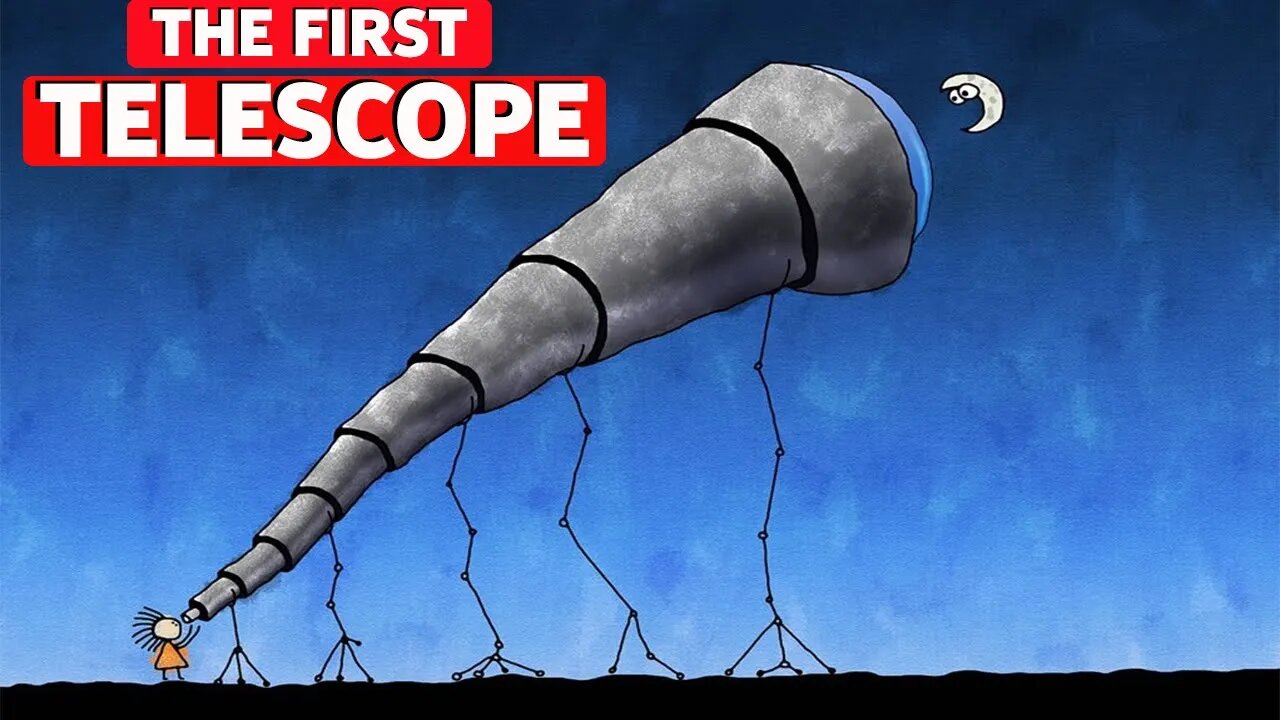Premium Only Content

TELESCOPE HISTORY: FROM GALILEO TO HUBBLE -HD
TELESCOPE HISTORY: FROM GALILEO TO HUBBLE
The history of telescopes spans several centuries and represents a remarkable journey of human curiosity, innovation, and technological advancement. From Galileo Galilei's pioneering observations to the groundbreaking discoveries made by the Hubble Space Telescope, the evolution of telescopes has revolutionized our understanding of the cosmos. Here is a description of this transformative journey:
Galileo's Telescope (17th century): Galileo Galilei is credited with inventing one of the earliest telescopes in the early 17th century. His telescope featured a simple arrangement of lenses that allowed him to observe celestial objects in greater detail. Galileo's observations of the Moon, Jupiter's moons, and the phases of Venus provided evidence supporting the heliocentric model of the solar system.
Refracting Telescopes (17th-19th centuries): Building upon Galileo's design, astronomers refined and improved telescopes by utilizing lenses to gather and focus light. Refracting telescopes, such as the ones developed by Isaac Newton and Christiaan Huygens, expanded our understanding of the planets, stars, and galaxies, revealing the intricate beauty and vastness of the universe.
Reflecting Telescopes (18th-19th centuries): The introduction of reflecting telescopes, which utilized mirrors instead of lenses to gather and reflect light, marked a significant advancement. William Herschel, a notable astronomer, constructed larger and more powerful reflecting telescopes, allowing for detailed observations of celestial objects beyond what was possible with refracting telescopes.
Mount Wilson Observatory (early 20th century): The Mount Wilson Observatory, established in California, played a pivotal role in advancing astronomical research. Astronomers such as Edwin Hubble utilized the observatory's 100-inch Hooker telescope to make groundbreaking discoveries, including evidence of an expanding universe and the existence of other galaxies beyond our Milky Way.
Space-Based Telescopes (20th century): The launch of space-based telescopes opened up new frontiers in observational astronomy. The Hubble Space Telescope, launched in 1990, revolutionized our understanding of the cosmos. Orbiting above Earth's atmosphere, it provided exceptionally clear and detailed images, enabling profound discoveries about the age of the universe, dark matter, and black holes.
Advancements in Technology (21st century): In recent years, telescopes have continued to evolve with advancements in technology. From ground-based telescopes with adaptive optics correcting for atmospheric distortion to space-based observatories like the Kepler and James Webb Space Telescopes, astronomers have access to increasingly powerful tools to explore the universe.
The history of telescopes demonstrates the relentless pursuit of knowledge and the human desire to explore the unknown. Each milestone in telescope technology has expanded our understanding of the cosmos, allowing us to glimpse the wonders of distant galaxies, unravel the mysteries of the universe's origins, and inspire awe and curiosity for generations to come.
#TelescopeRevolution
#ExploringCosmicWonders
#GazeBeyondHorizons
#GalileosLegacy
#FromLensToMirror
#EyesOnTheStars
#UnveilingTheUniverse
#SpaceTelescopeAdvancements
#JourneyThroughCosmos
#HubbleRevelations
#GroundbreakingObservations
#InnovationInAstronomy
#ThroughTheTelescopeLens
#CosmicExplorationTimeline
#TelescopeEvolution
#AstronomicalRevolution
#UnlockingCelestialMysteries
#CosmicGlimpses
#ViralTelescopeHistory
#WitnessingCosmicWonders
-
 LIVE
LIVE
Akademiks
4 hours agoDrake and PartyNextDoor '$$$4U' Album Sells 250K first week. BIG AK IS BACK.
3,159 watching -
 LIVE
LIVE
MyronGainesX
4 hours ago $14.83 earnedDan Bongino Named As Deputy Director Of FBI And CPAC Recap
2,596 watching -
 DVR
DVR
vivafrei
3 hours agoBarnes Live from Seattle - Defending Benshoof in a Case that is CRAY CRAY!
50.3K19 -
 2:12:12
2:12:12
Robert Gouveia
3 hours agoLiberals EXPLODE over Elon's Email; Lawsuits FLY; Sanctions?? Congrats Dan!
30.7K6 -
 1:33:36
1:33:36
Redacted News
4 hours agoBREAKING! PUTIN LAUNCHES MASSIVE OFFENSIVE IN UKRAINE AS EUROPEAN LEADERS PUSH FOR MORE WAR
89K167 -
 44:39
44:39
Kimberly Guilfoyle
4 hours agoBetter Days Ahead for the FBI, Live with Asm Bill Essayli & John Koufos | Ep.199
43.1K24 -
 1:40:29
1:40:29
In The Litter Box w/ Jewels & Catturd
1 day agoWhat Did You Do Last Week? | In the Litter Box w/ Jewels & Catturd – Ep. 748 – 2/24/2025
92.6K30 -
 23:34
23:34
Stephen Gardner
4 hours ago🔥CNN PANICS over $5000 DOGE Dividend | Trump Orders bigger Audits
54.7K115 -
 1:53:54
1:53:54
The White House
6 hours agoPresident Trump Holds a Press Conference with President Emmanuel Macron of France
72.7K41 -
 1:48:31
1:48:31
The Officer Tatum
6 hours agoLIVE MSNBC DROPS HAMMER On Joy Reid as STAFFERS PANIC! + More Ep 67
107K70